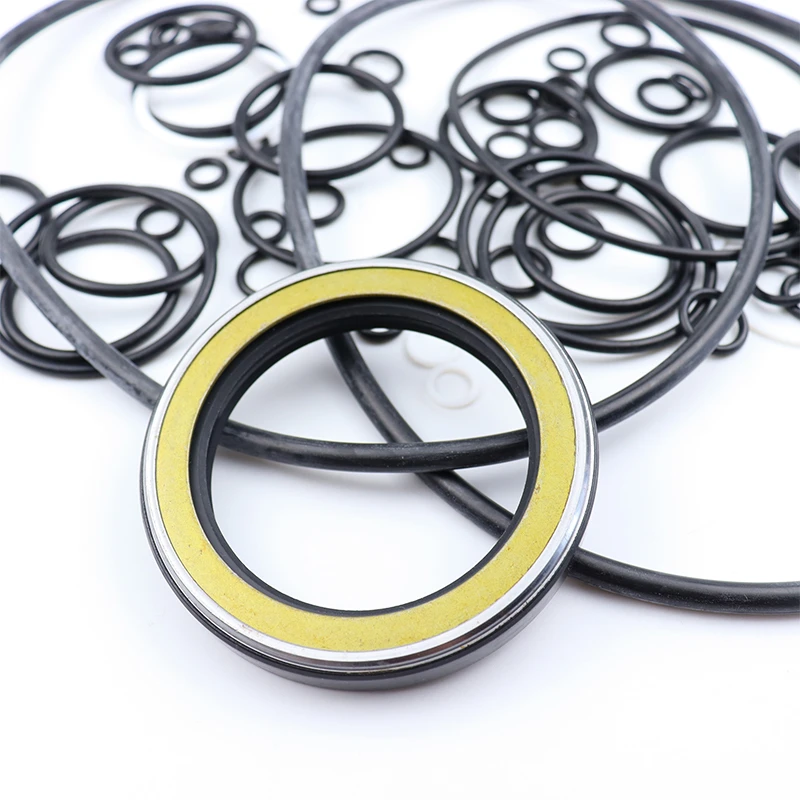Դկտ . 01, 2024 15:11 Back to list
Seals and Wipers for Hydraulic Cylinders Explained in Detail
Understanding Hydraulic Cylinder Seals and Wipers
Hydraulic cylinders are crucial components in various industrial machines, equipment, and systems. They convert hydraulic energy into mechanical energy, providing linear motion to power machinery, construction equipment, and even automotive systems. However, the effective and efficient operation of hydraulic cylinders heavily relies on their sealing components—specifically, hydraulic cylinder seals and wipers. Understanding their function, types, and maintenance can significantly enhance the lifespan and reliability of hydraulic systems.
The Role of Hydraulic Cylinder Seals
Hydraulic seals are essential for preventing fluid leakage from the system and ensuring that the hydraulic pressure is maintained. They serve two primary functions sealing and guiding. Seals are installed in hydraulic cylinders to isolate the working fluid, which typically consists of hydraulic oil. When pressure is applied to the fluid, it activates the piston within the cylinder, enabling the system to perform various tasks.
There are different types of hydraulic seals, including static and dynamic seals. Static seals are used in fixed positions, while dynamic seals are designed to prevent fluid leakage during the movement of parts, such as the piston rod in a hydraulic cylinder. Common materials used for these seals include rubber, polyurethane, and PTFE (Teflon), each chosen for their resistance to wear, temperature fluctuations, and chemical exposure.
The Importance of Wipers
In addition to seals, hydraulic wipers play a vital role in maintaining the cleanliness of hydraulic systems. Wipers, also known as dirt seals or scrapers, are positioned at the outer end of the hydraulic cylinder. Their primary function is to prevent dust, dirt, and other contaminants from entering the hydraulic system as the piston rod extends and retracts. Contaminants can cause significant wear and tear on the seals, potentially leading to premature failure and operational inefficiency.
Wipers are designed to complement the seals, enhancing the overall durability and performance of the hydraulic cylinder. They are typically made from resilient materials that can withstand harsh environmental conditions, ensuring they can effectively remove debris without damaging the piston rod or seals.
hydraulic cylinder seals and wipers

Types of Hydraulic Seals and Wipers
Hydraulic seals come in various shapes and designs, including O-rings, U-cups, and V-rings, each offering unique benefits for different applications. For example, O-rings are versatile and widely used for sealing applications, while U-cups are effective in applications requiring strong sealing under high pressure. V-rings, on the other hand, are excellent for applications with axial movement.
Wipers can also vary in design, often featuring shapes that help them perform their function more effectively. Common designs include flat wipers, lip-type wipers, and finger wipers. The selection of the appropriate wiper design is critical for ensuring maximum protection against contaminants.
Maintenance and Best Practices
Proper maintenance is essential for the longevity of hydraulic seals and wipers. Regular inspections should be conducted to check for signs of wear, leakage, and damage. It is advisable to replace seals and wipers at the first sign of deterioration to prevent more extensive damage to the hydraulic system.
Another critical aspect of maintaining hydraulic systems involves ensuring that the hydraulic fluid remains clean and free from contaminants. Using high-quality fluids and employing filtration systems can significantly enhance the performance and life of hydraulic components.
In conclusion, hydraulic cylinder seals and wipers are vital for the efficient operation of hydraulic systems. By understanding their roles, types, and maintenance practices, operators can ensure the reliability and longevity of hydraulic cylinders, ultimately improving the performance of the machinery they support. Regular attention to these components will not only mitigate costly repairs but also enhance operational efficiency across various industries.
-
Unlocking the Potential of Hydraulic Systems with Essential Sealing Solutions
NewsAug.06,2025
-
Unleash the Power of Your Hydraulic Systems with Our Premium Seal Kits
NewsAug.06,2025
-
Specialized Hydraulic Seal Kits for Breakers, Pistons, and Presses
NewsAug.06,2025
-
Revitalize Hydraulic Systems with Premium Repair and Seal Kits
NewsAug.06,2025
-
Fortify Your Cylinders with Premium Sealing Solutions
NewsAug.06,2025
-
Elevate Hydraulic System Reliability with Specialized Seal Kits
NewsAug.06,2025
-
TCN Oil Seal Metal Ring Reinforcement for Heavy Machinery
NewsJul.25,2025
Products categories
















